
Building Social Backlinks: Are They Worth Your Time?

Stewart
Chief Link Building Strategist
If you’ve been in the search engine optimization (SEO) industry for a while, you know that link building is a must for boosting your search engine rankings.
But there’s a topic in the SEO community that still stirs up debate: social backlinks.
Why the controversy?
It all comes down to link equity.
Because most social backlinks are "nofollow links," they don’t pass on the same link equity as traditional backlinks.
Some experts argue that search engines consider social backlinks when ranking sites, while others see them as supplementary.
But either way, ignoring social media backlinks could mean missing out on new audiences and chances to improve your rankings. While they might not pack the same punch as traditional backlinks, social backlinks are far from useless.
Let’s explore what they are, why they’re important, and how to harness them to positively impact your link building and SEO efforts.
💡Key Takeaways
Social backlinks are links shared on social media platforms such as Facebook, Twitter, LinkedIn, and Instagram. They can appear in posts, profiles, or comments.
The debate around social backlinks centers on the fact they are "nofollow" links, which means they don’t pass on the same link equity as traditional backlinks.
However, social backlinks can influence SEO by driving website traffic and user engagement.
Incorporating social backlinks into your SEO strategy can help boost your overall marketing efforts, traffic, and brand awareness.
What Are Social Media Backlinks?
Have you ever shared a link on your business’s LinkedIn profile or on your other social media pages? Those are social backlinks in action.
These links can come from Facebook, Twitter, LinkedIn, and Instagram, and can appear in posts, profiles, or comments.
In the below example, Ubersuggest has shared a backlink to its SEO Analyzer tool:
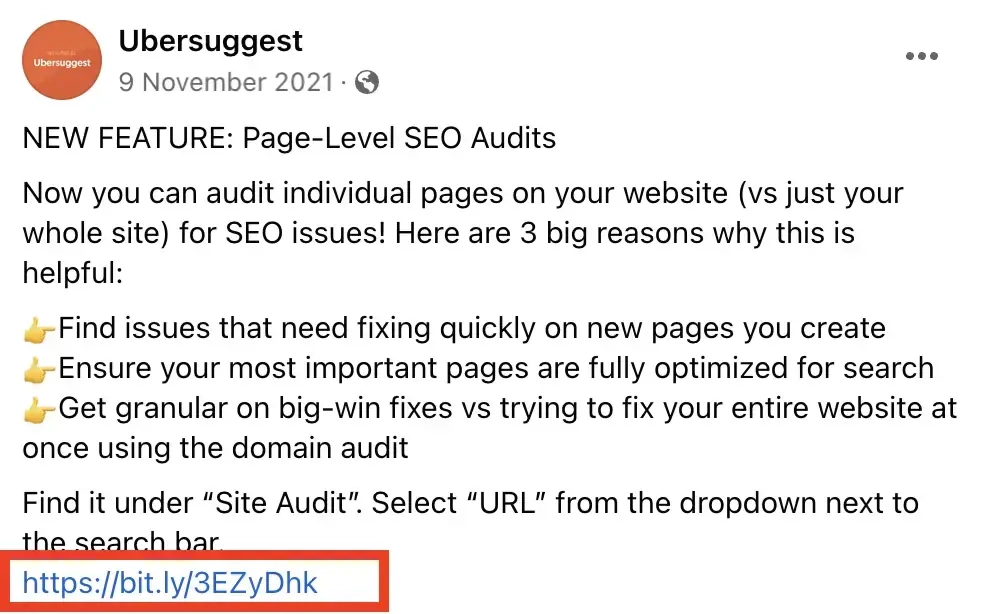
Here’s an example of a social backlink in a Facebook profile:
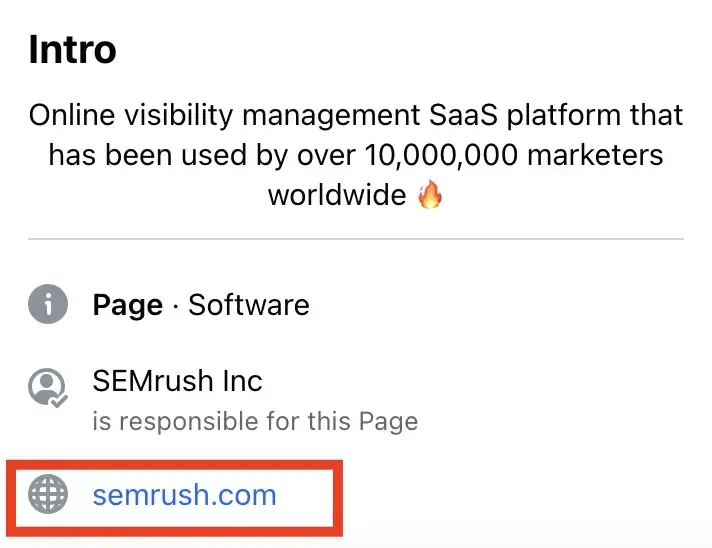
Here’s an example from us at LinkBuilder, where we’ve included our website URL in our LinkedIn profile:
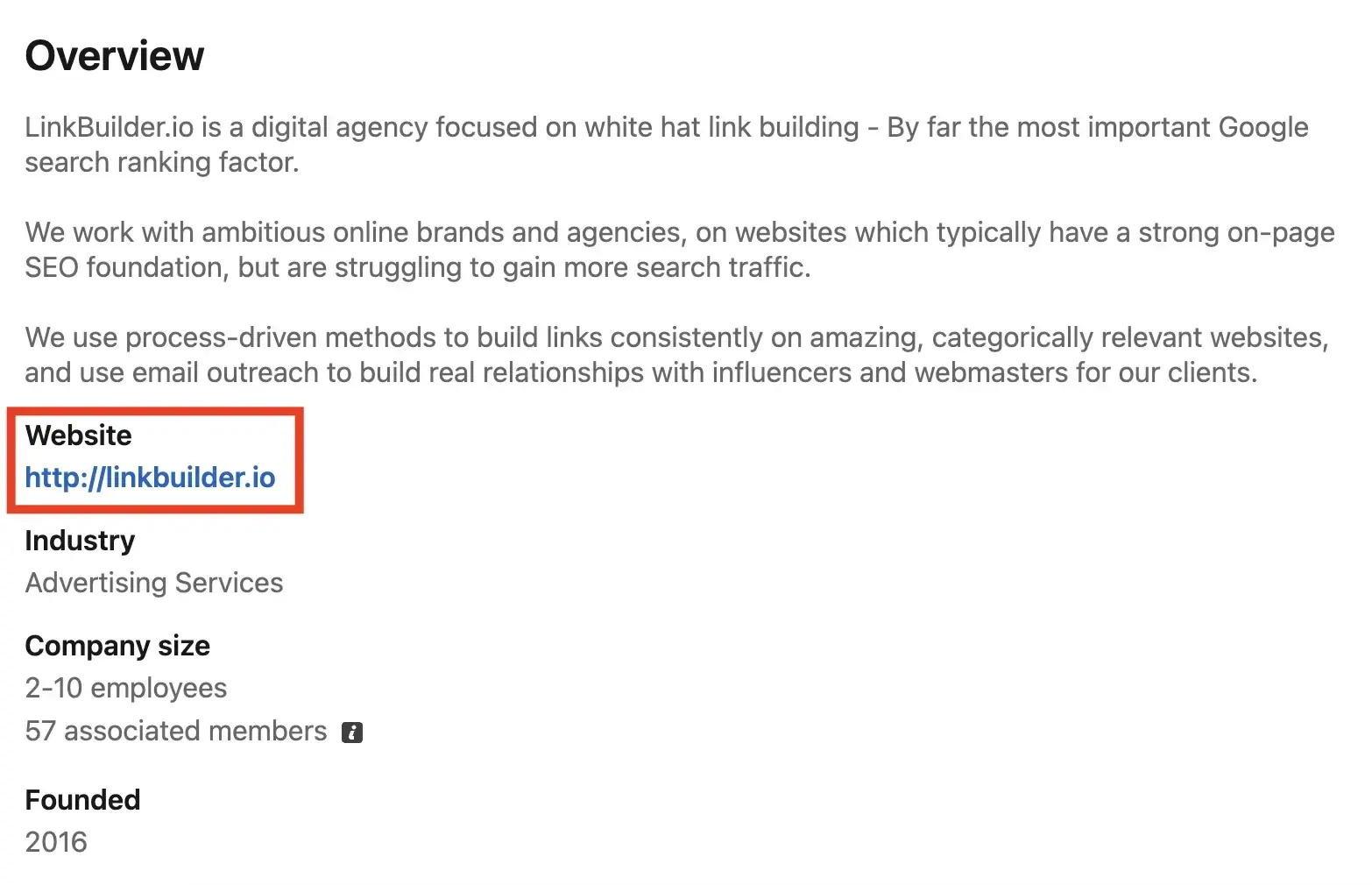
Are Social Backlinks Worth Building?
It's easy to become so focused on the value you gain from link building that you overlook the true purpose of social media: building your audience.
Social media is a powerful tool to connect with audiences, and you should be using it supplementary to your link-building strategy.
This is because high engagement on social media leads to increased online visibility. Every share or comment is a chance to connect with potential customers and drive valuable traffic to your website.
The more people see your content, the more familiar they become with your brand.
But is social media a potential win for SEO? In SEO circles, social media backlinks are often overlooked because they are typically "nofollow" and don't pass on link equity.
ℹ️ What is a Nofollow Link?
A nofollow link is a type of link with an attribute (rel="nofollow") that tells search engines not to consider it when calculating the ranking of the linked page. This means the link does not pass any SEO value or "link juice" to the linked site.
It's often used for links in comments, sponsored content, or any user-generated content where the site owner doesn't necessarily want to vouch for the linked content.
Despite their nofollow attribute, there is evidence that suggests social backlinks do have an impact on SEO:
⚡The Google search algorithm leak
In May 2024, the Google search algorithm had its biggest leak in history.
The leak released over 2,500 pages of top-secret algorithm factors and shed new light on social backlinks.
It turns out that the true power of social backlinks lies beyond just passing on link equity.
The leak suggests user engagement metrics (like clicks from social media) may influence rankings. In addition, the leak revealed that website traffic is also a ranking factor—and using social backlinks is a great way to drive website traffic and engagement.
⚡Google’s quality rating guidelines
Google’s Search Evaluator Guidelines mention that social media activity can reflect a website's authority. Here’s what it says:
💬 Google’s Search Evaluator Guidelines:
Consider the extent to which the content creator or the website is known as a go-to source for the topic.
While most topics do not have one official, authoritative website or content creator, when they do, that website or content creator is often among the most reliable and trustworthy sources.
For example, a local business profile page on social media may be the authoritative and trusted source for what is on sale now.
These guidelines are followed by human search raters, and their ratings inform Google’s algorithm. This suggests social media activity might be considered in search rankings, even if social links themselves don't directly pass on ranking power.
⚡Google doesn’t ignore nofollow links
As mentioned, social backlinks are nofollow. This means they don't pass on traditional link equity.
The result is that many in the SEO community underestimate their value.
However, we now know that Google doesn’t completely ignore nofollow links. In fact, Google itself specifically states it uses these types of links as “hints” and no longer outright ignores them.
Here’s what it says:
💬 Google’s Search Central Blog:
Why not completely ignore such links, as had been the case with nofollow [until 2019]?
Links contain valuable information that can help us improve search, such as how the words within links describe content they point at. Looking at all the links we encounter can also help us better understand unnatural linking patterns.
By shifting to a hint model, we no longer lose this important information, while still allowing site owners to indicate that some links shouldn't be given the weight of a first-party endorsement.
It’s interesting that Google notes that these links are not given “the weight of a first-party endorsement.”
While there’s no question that dofollow links are the gold standard for passing on link equity, it’s entirely possible that social backlinks provide some additional SEO benefit that Google hasn’t revealed to the public.
ℹ️ Do Some Search Engines Place More Value on Social Backlinks?
Yes. For example, Bing places more value on social signals. However, Google gets far more traffic, accounting for over 90% of the global search engine market share.
So, you can't rely solely on Bing's algorithms to improve your SEO—focusing on Google's ranking factors is still crucial for reaching a broader audience.
Social Backlinks: The Advantages and Disadvantages
As we’ve explored, social backlinks are a bit of a gray area in the SEO world and some professionals seem to frown upon social media link building.
This is because there’s a common misconception that if a link doesn’t directly boost rankings, it’s not worth the effort.
Here’s a summary of the pros and cons of social backlinks so you can see whether they're worth your time:
⬆️ The advantages of social backlinks
Potential ranking boost: While the jury's still out, the recent Google leak suggests user engagement metrics from social media might influence rankings. It’s generally thought that having regular social links pointing to your site indicates to search engines that your company actively engages online and therefore, your website is likely to be trustworthy.
Increased brand awareness: Social backlinks spread the word about your brand and content to a wider audience. The more your content gets shared, the more people become familiar with your name.
Direct traffic: Every link shared, commented on, or liked translates into a potential customer discovering your website. This can significantly increase website traffic, drive valuable leads, and positively impact your SEO.
Audience engagement: Social media backlinks open a conversation. Sharing your content on social media platforms allows you to connect and engage with potential customers.
⬇️ The disadvantages of social backlinks
Nofollow links: Social backlinks are nofollow links, which means search engines don't directly pass on ranking power through them. This makes their direct SEO impact less evident.
Algorithms: Social media platforms update their algorithms frequently, which could negatively impact your reach and engagement. You’ll need to constantly refresh your approach to remain competitive.
Uncertainty: The SEO benefits of social backlinking are still a bit murky, even after Google’s leak. It’s unlikely that social backlinks will make or break your SEO efforts—but they could give you that extra boost to beat competitors in the SERPs.
➡️ The final verdict
Building social backlinks is a no-brainer.
They enhance your overall marketing efforts, are achievable, and carry no real downsides.
Given the potential benefits, incorporating social backlinking into your digital marketing strategy is a smart move for any business.
How to Get Started: 12 Social Media Backlinks You Need to Build
Social media backlinks often get overlooked in SEO strategies—but don’t be too quick to dismiss them.
Google’s quality guidelines and the recent leak reveal that social backlinks actually do play a role in search rankings. This means your social media efforts are more important than ever for SEO.
Given these insights, you should take advantage of every opportunity to place links to your website on your social media pages.
Think of your social media profiles as extensions of your website: each one should guide your audience back to your main site. Whether it's in your bio, posts, or stories, ensure you're making the most of these valuable spaces.
Here's a closer look at the most important places to include these links on your social media pages:
Link 1: Your business page’s intro tab on Facebook
On your Facebook business page, the intro tab is a prime spot.
It’s often the first thing visitors see, which makes it the perfect place to include your website link to direct traffic:
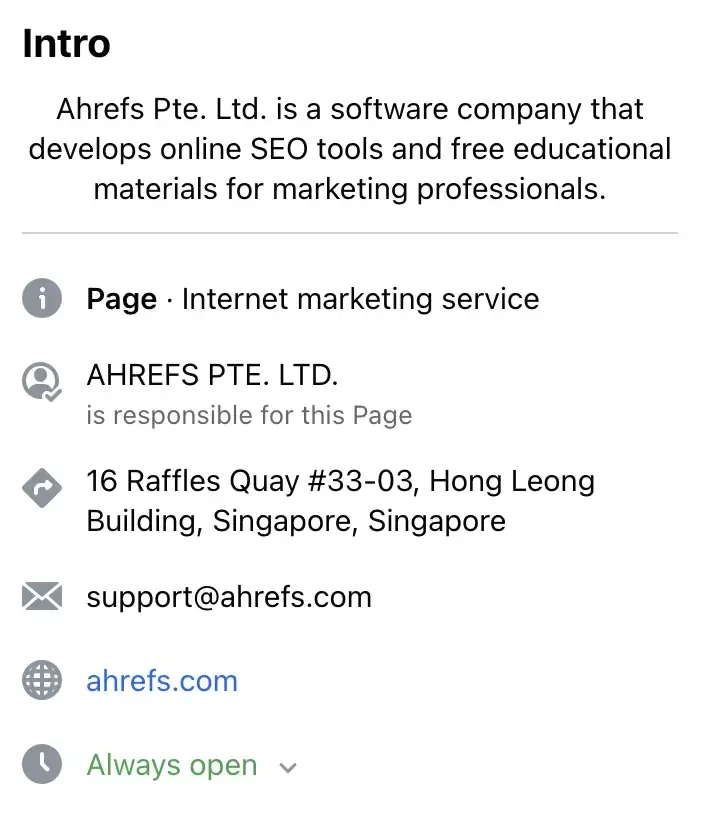
Link 2: Your personal page intro tab on Facebook
Adding a link to the intro tab of your personal Facebook page is a great way to direct friends, family, and followers to your website.
This spot is highly visible and can attract clicks from people who are interested in learning more about you and your business:
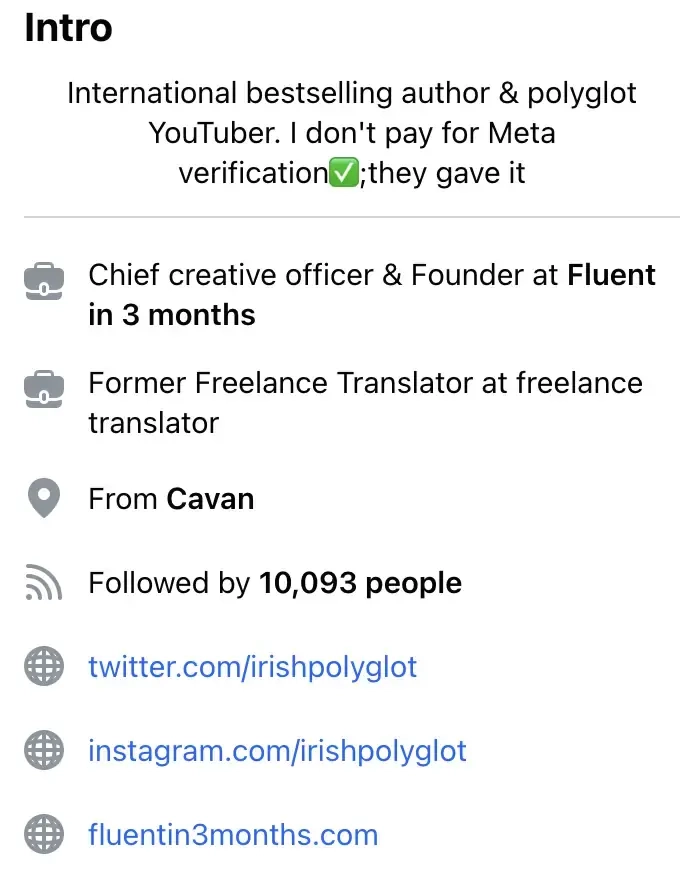
Link 3: Your public figure page on Facebook
If you have a public figure page, use the intro section to include a link to your website.
This is especially effective for influencers, authors, or speakers, as it provides a direct path for fans and followers to explore more of your content:
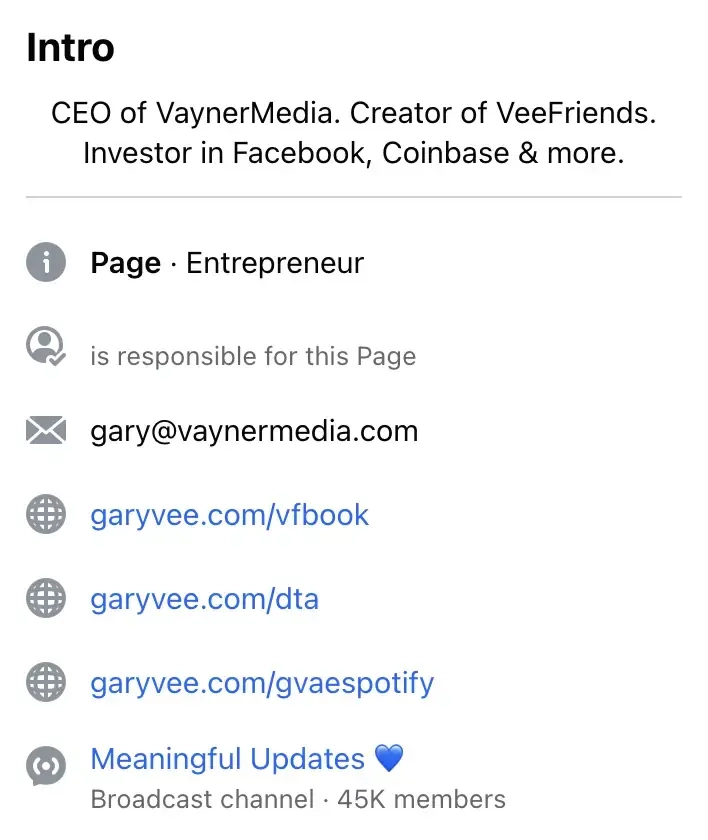
Link 4: Your page posts on Facebook
Regularly posting updates on your Facebook page can drive continuous traffic to your website.
Whether you’re sharing blog posts, product updates, or news articles, including a link in your posts helps funnel social media users to your site:

Link 5: Your cover photos on Facebook
Since cover photos are highly visible, adding a link here ensures that visitors can easily find your website.
Add your link to the first comment or the cover photo description:
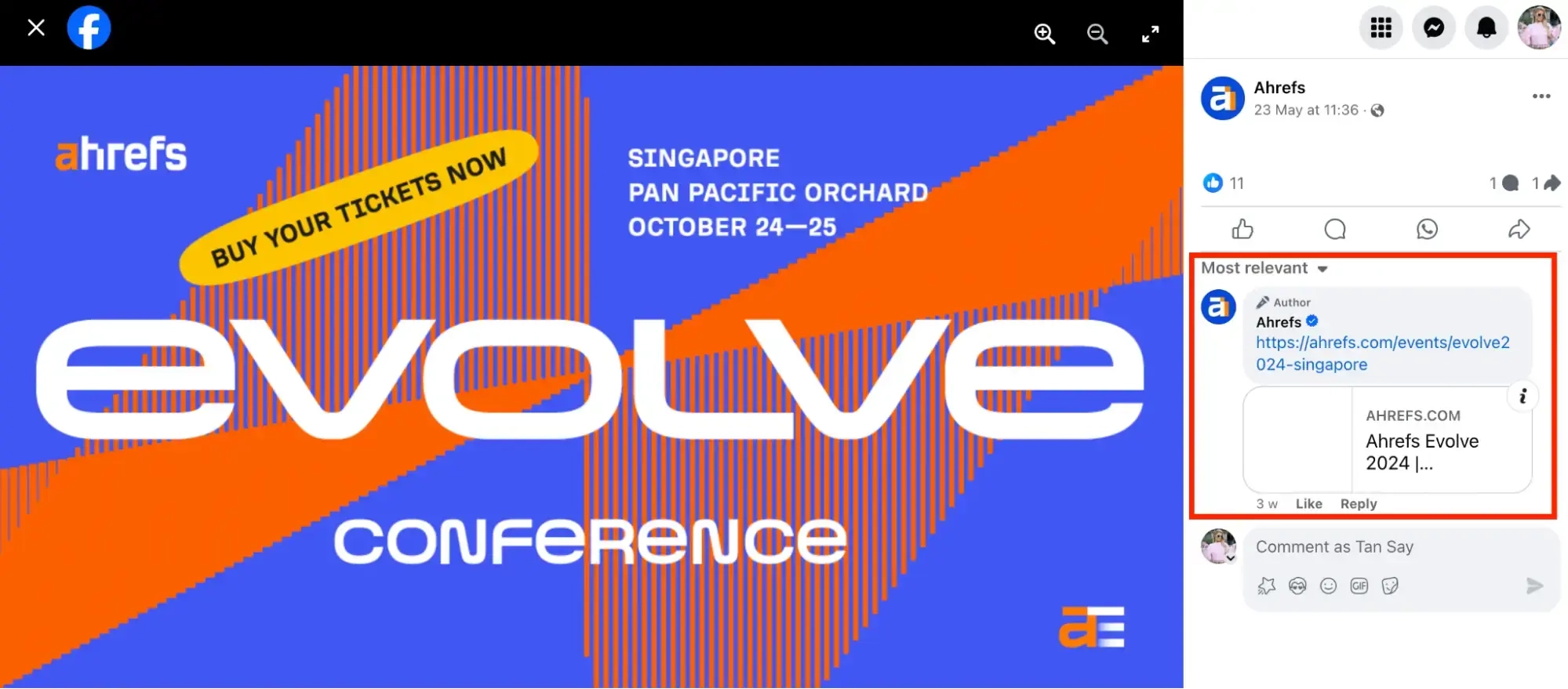
Link 6: Your featured posts on Facebook
Featuring specific posts that include links to your website can highlight important content and drive traffic.
These posts remain at the top of your page, ensuring maximum visibility and engagement:
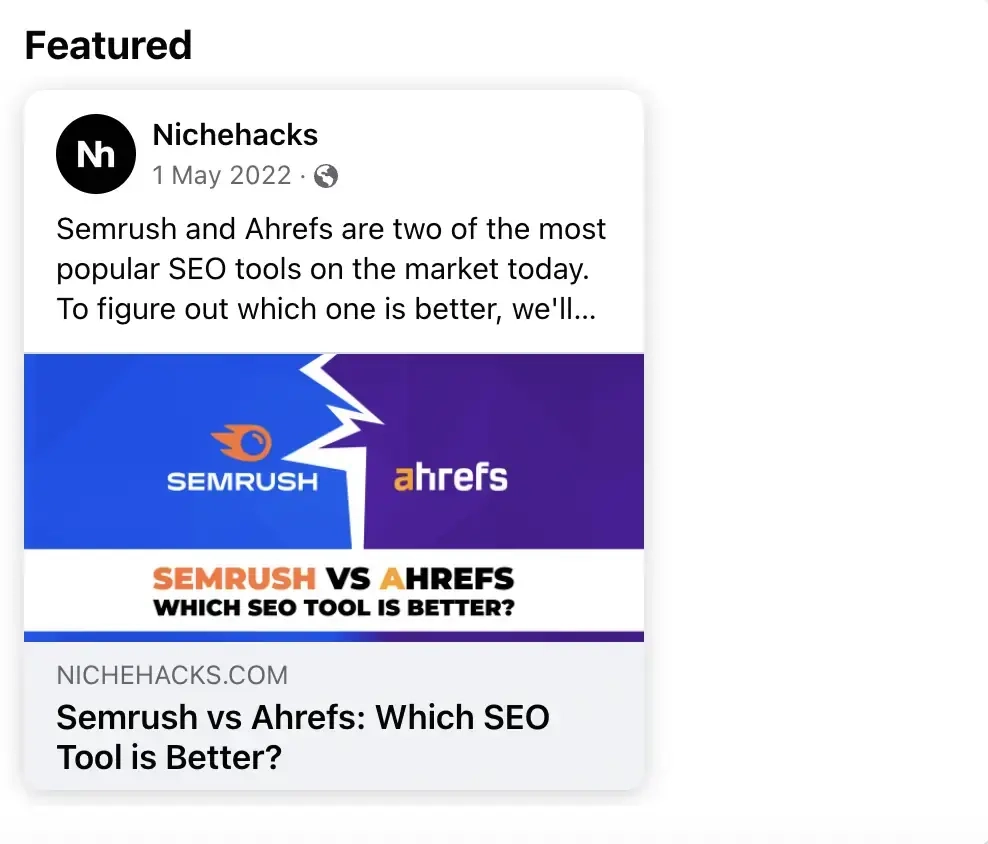
Link 7: Your Twitter/X bio
Your Twitter/X bio is a great spot for including a link to your website:
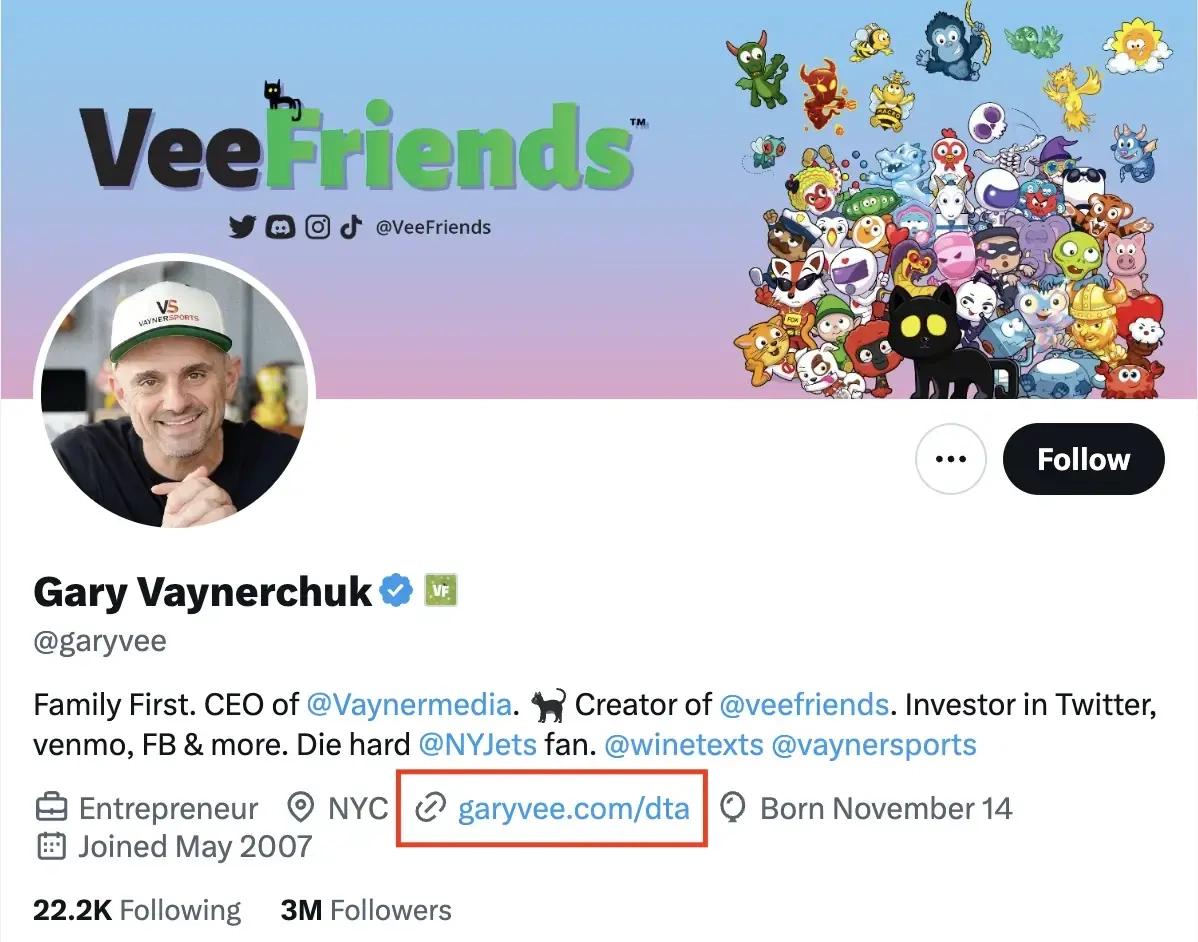
Link 7: Your Twitter/X posts
Regularly tweeting links to your website content helps drive traffic.
Share blog posts, product updates, and other valuable content, ensuring each tweet includes a link back to your site:
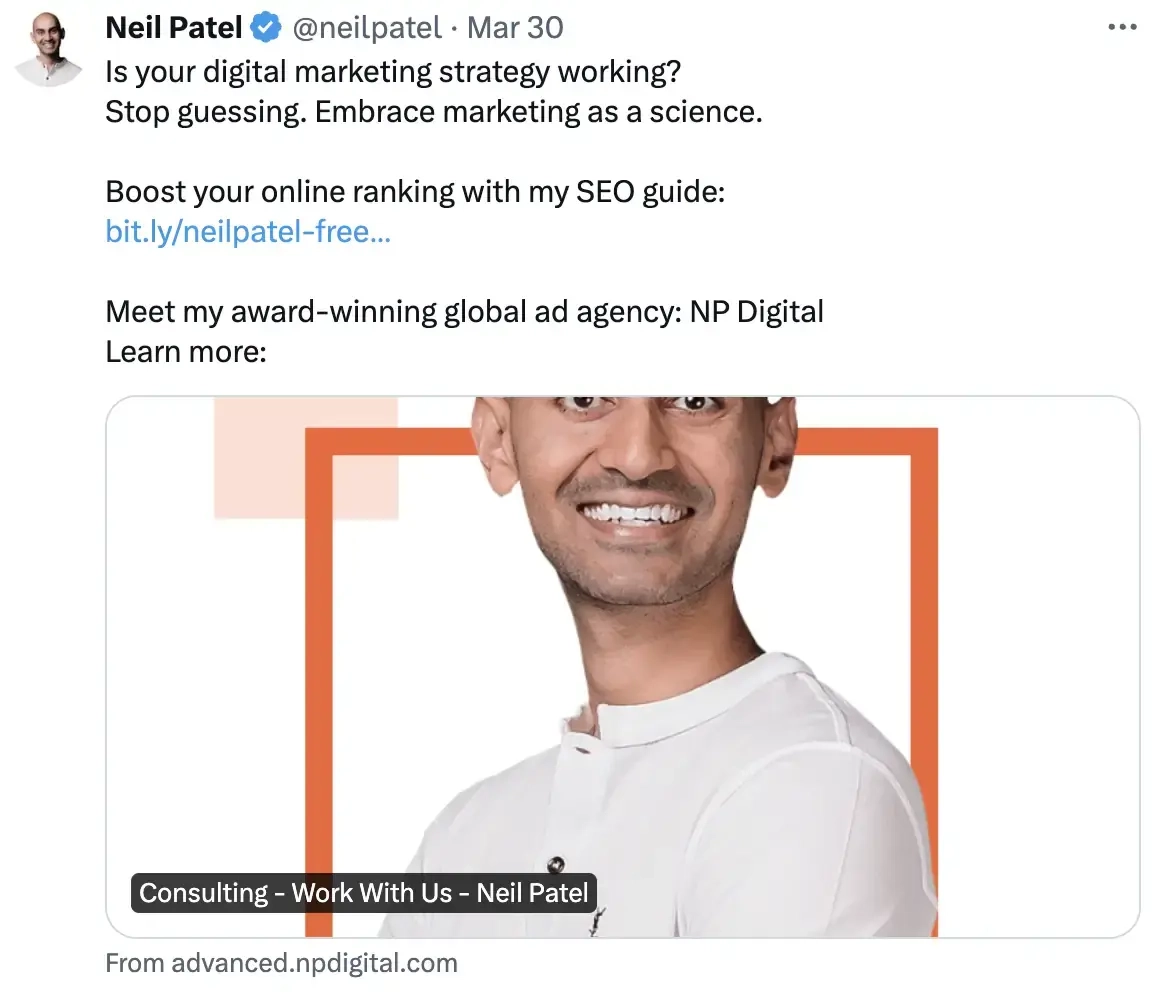
Link 8: Your LinkedIn bio
Your LinkedIn bio provides context about your professional background and interests, making it a logical place for a website link:
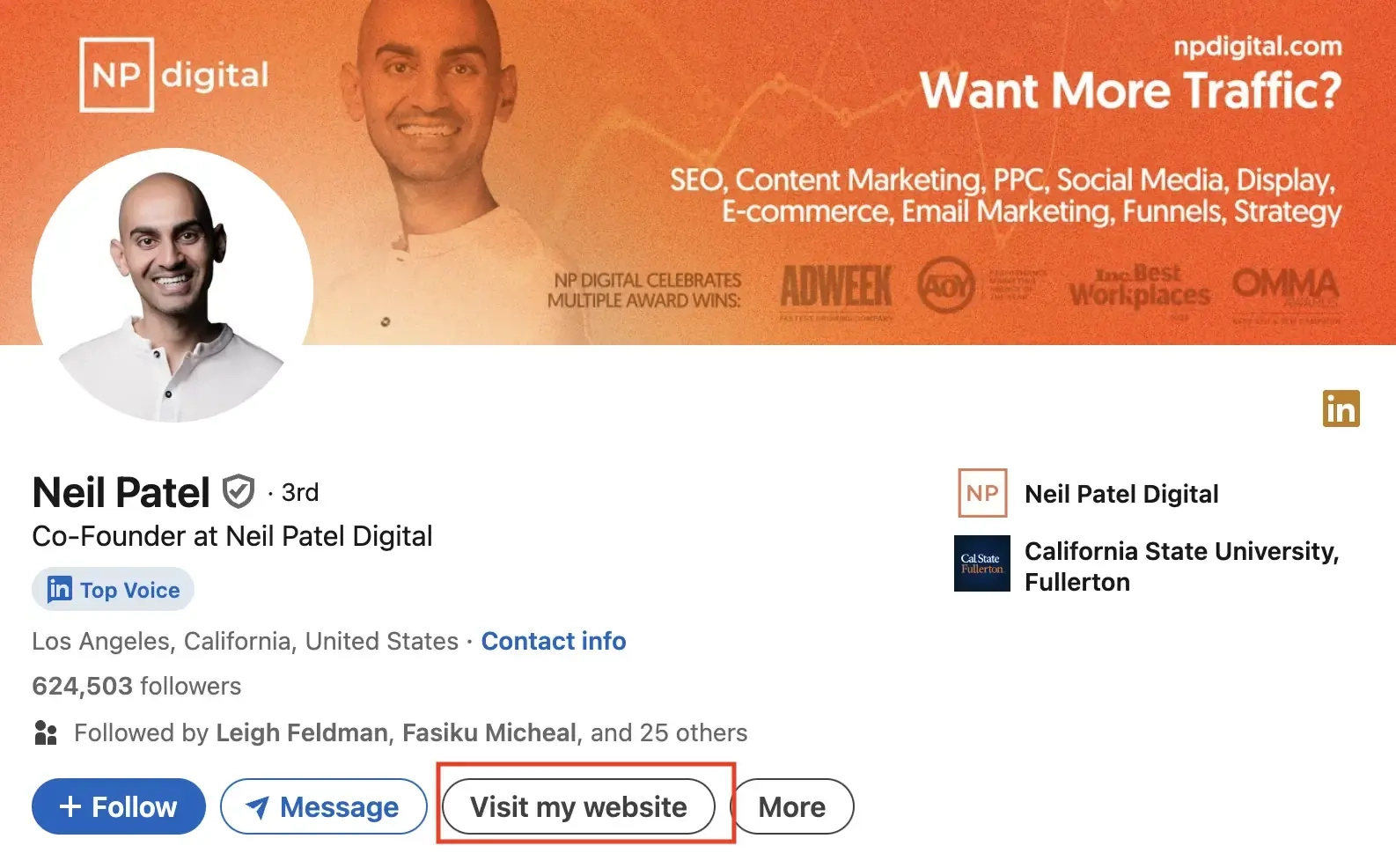
Link 9: Your company’s posts on LinkedIn
Featuring posts on your LinkedIn company page that include links to your website can increase visibility and traffic.
However, keep in mind that LinkedIn gives less visibility to posts with external links. So, it’s important to balance your SEO efforts with posts that are aimed at reaching a wider audience:
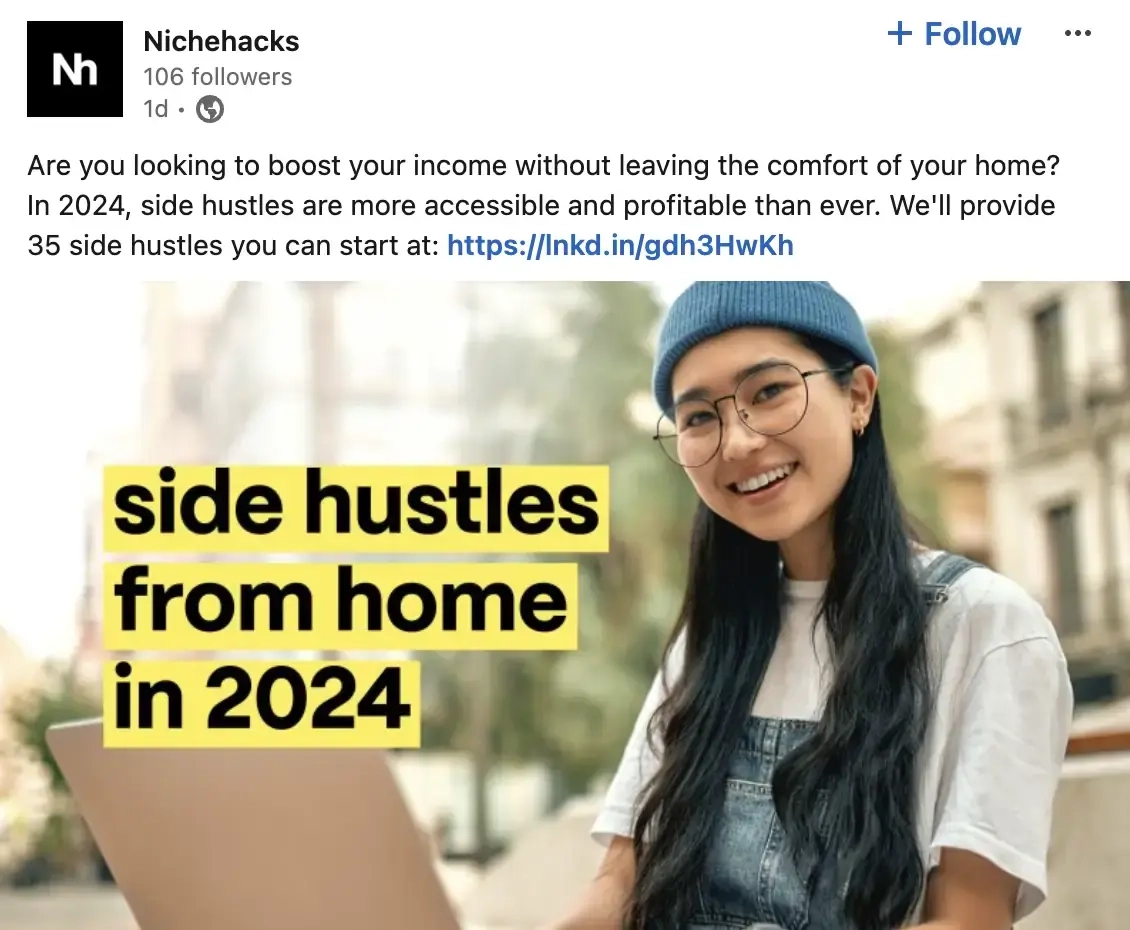
Link 10: Your YouTube ‘About’ page
Your YouTube ‘About’ page should include a link to your website:
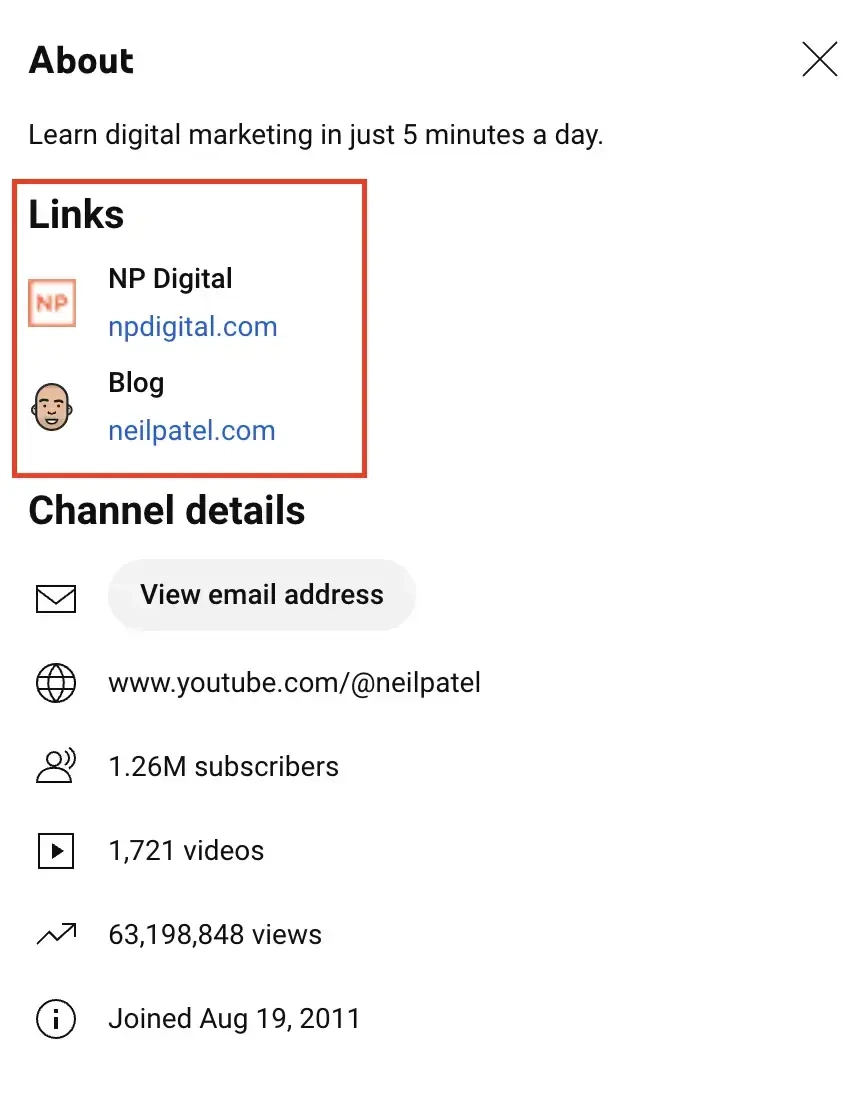
Link 11: Your YouTube video descriptions
Each video description should contain a brief overview of the video content and a call to action to visit your website for more information, related content, or special offers:
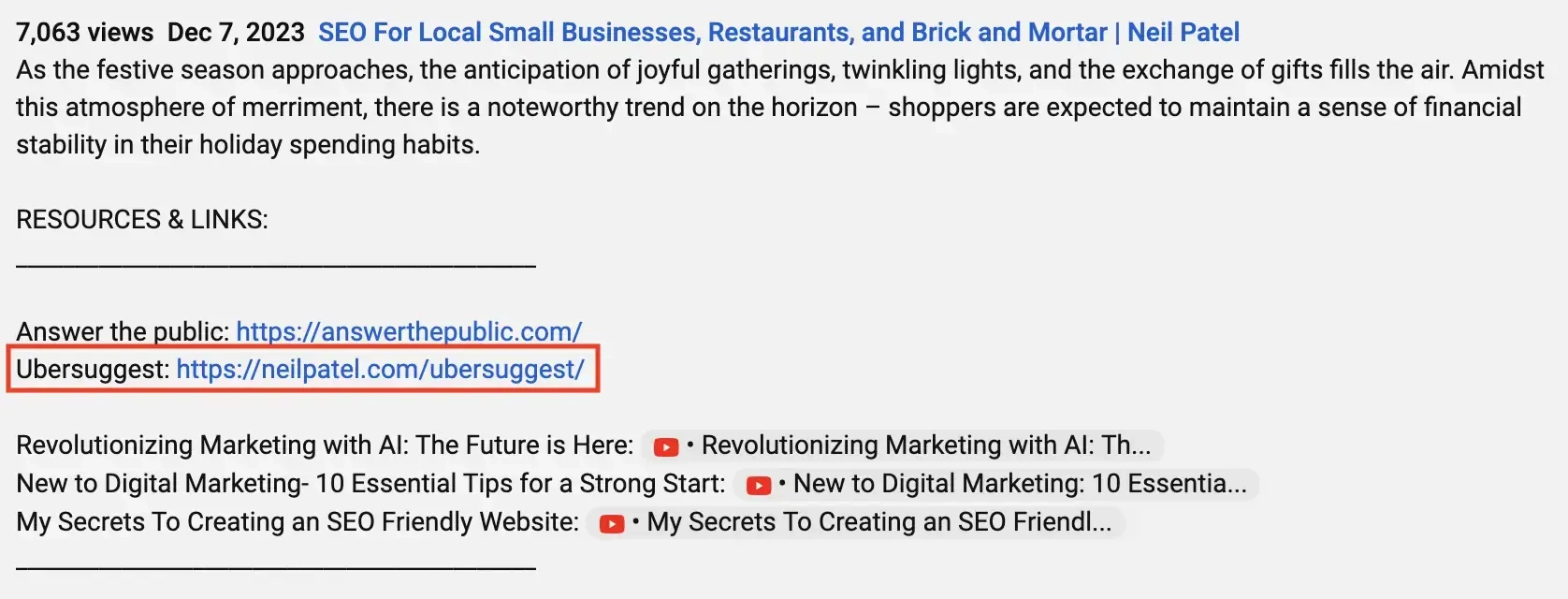
Link 12: Your Instagram bio
Your Instagram bio is a high-visibility spot for a website link. Since Instagram limits clickable links in posts, adding a link to your bio is essential:

Tips to Build More Social Media Backlinks
Now that you’ve set your social media profiles up with the necessary backlinks, the next step is to find more opportunities to post links to your website.
Here are some tried-and-tested methods to attract and integrate social backlinks throughout your social media presence:
1. Add share icons to your website content
Adding share icons to your website content allows visitors to easily share your content on their social media platforms.
Here’s what this might look like:
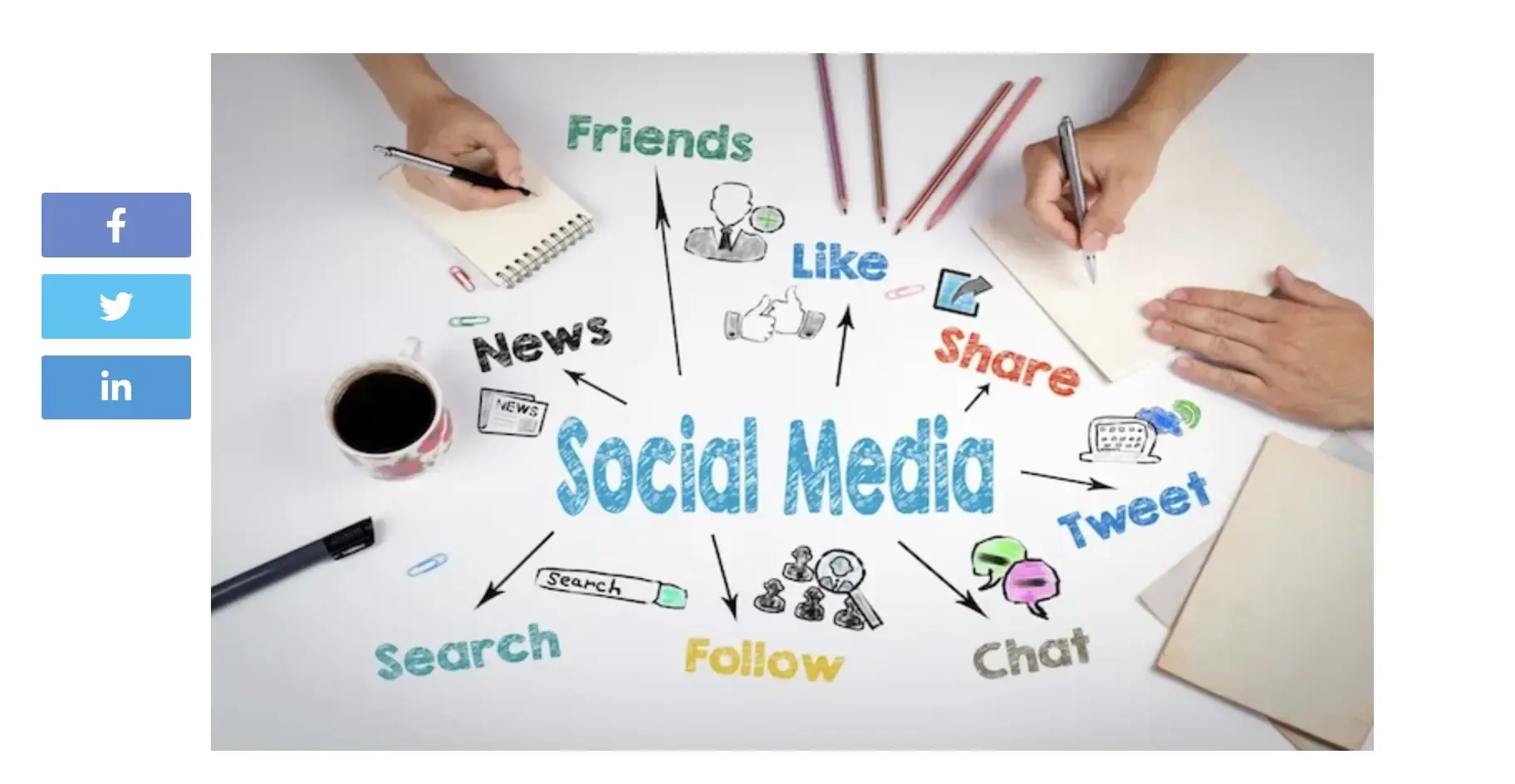
✅ How to do it
Use plugins: Use a platform like ShareThis to add social media sharing buttons to your blog posts, articles, and web pages.
Customize icons: Customize the icons to match your website’s design and user preferences. Ensure they are placed where users can easily see and use them.
Encourage sharing: Add a call to action within your content to encourage readers to share it on their social networks.
Positioning: Place the share icons at the beginning and end of your articles to maximize visibility.
Track analytics: Use tools like Google Analytics to track which content is being shared the most, then refine your strategy accordingly.
Optimize for mobile: Ensure the share icons are mobile-friendly as a large portion of social media engagement happens on mobile devices.
2. Share new website content on social media
Sharing new content on your social media channels ensures it reaches a broader audience and drives traffic back to your site.
Here’s an example of website content shared to social media:
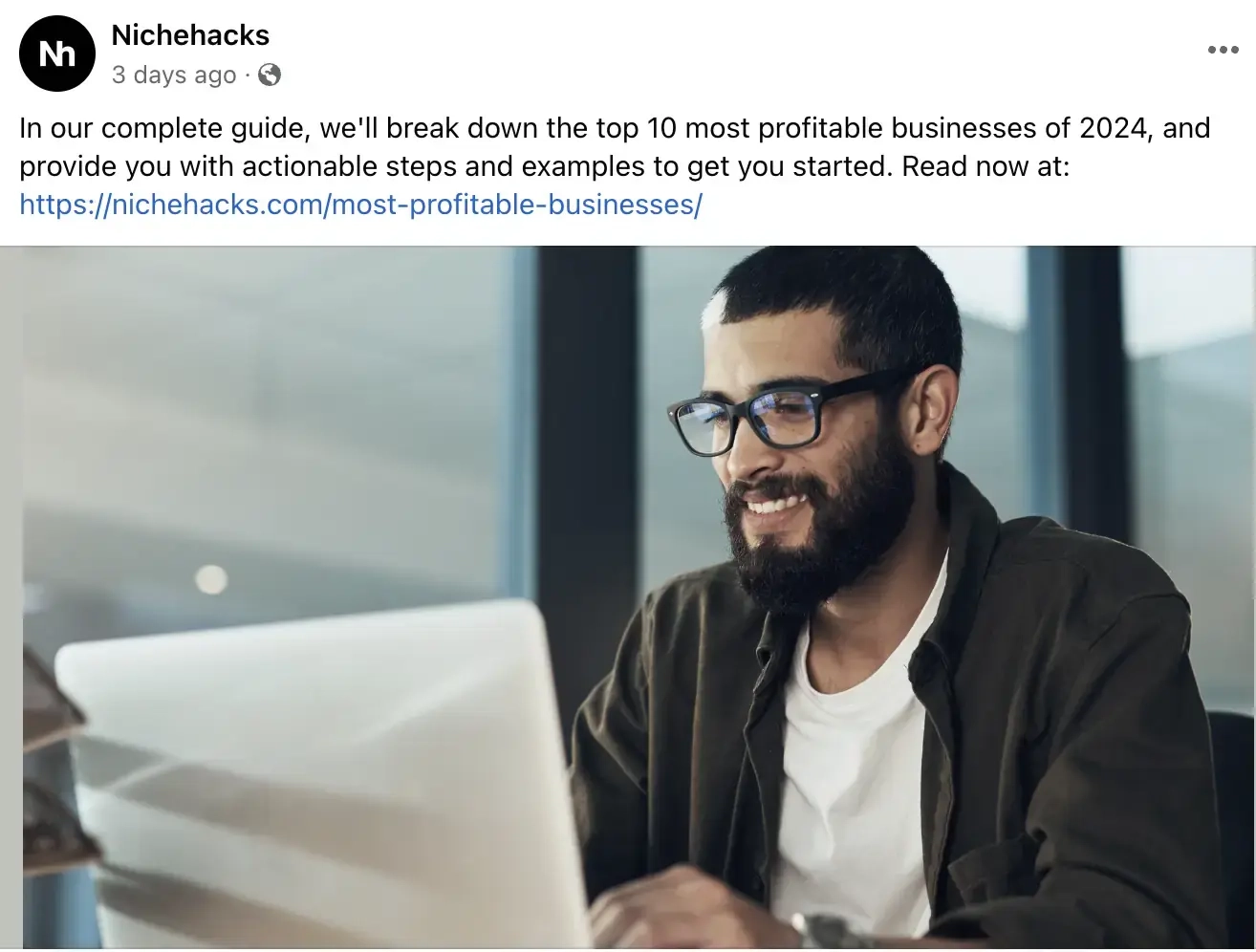
✅ How to do it
Craft compelling copy: Create enticing copy for your social media posts to attract clicks.
Use automation tools: With tools like Hootsuite, Buffer, or Later, you can schedule posts and share new content across your social media platforms.
Be timely: Share new content as soon as it’s published to ensure it’s relevant.
Tailor your posts to each platform: For example, use visually appealing images on Instagram, brief updates on Twitter, and in-depth posts on LinkedIn.
Respond to engagement: Monitor the engagement on each post and be ready to respond to comments or questions.
3. Post regularly and include backlinks
According to a study by HubSpot, businesses that post 16 or more blogs a month get 3.5 times more traffic than those that post less frequently.
Every time you create content for your website, you should share it on social media, too.
Social media platforms are just as secretive about their algorithms as Google, but users have theorized that posting less can lower your engagement.
This is because these algorithms favor active accounts, and they prioritize content from users who post frequently. By posting less, you may find that your content gets shown to fewer people.
This decreased visibility can lead to a downward spiral in engagement.
✅ How to do it
Create a content calendar: A content calendar helps you plan and organize your posts. This ensures that you align your strategy with important dates, marketing efforts, and relevant industry news.
Use diverse content: Regularly include links to your website, but don't overdo it. Some posts should include links, while others should solely focus on engaging your audience without adding backlinks. This ensures your content doesn't come across as overly promotional.
Frequency: Aim for a posting schedule that keeps your target audience engaged without overwhelming them. For example, 1-2 posts per day on Twitter, 3-4 posts per week on Facebook and Instagram.
Content types: Rotate between different types of posts to keep your feed dynamic and engaging—for example, your posts can respectively feature static images, polls, videos, or GIFs.
Track your analytics: Track which types of content get the most engagement and adjust your strategy accordingly.
4. Find relevant content to post about
Your social media followers want to see content relevant to your brand. For example, if you run a blog about cycling, you may want to post or share content about:
Health and fitness.
Cycling gear and equipment.
Active transport and sustainability.
Cycling routes and trails.
Events and competitions.
Tips and techniques.
Maintenance and repairs.
Articles and research findings.
The more related content you post about, the more metrics will be available for you to analyze. By tracking them, you can hone in on the topics your target audience is most interested in.
✅ How to do it
News: Share industry news or updates relevant to your audience. This positions your brand as an authority in your niche.
Infographics: Create infographics that provide information in a visually appealing format. Include a link to a detailed article or resource on your website.
Ask questions: Engage your audience by asking questions related to your industry. Include a link to a blog post or resource for more information.
Share videos: Share videos and other content your audience would find interesting. Link back to related content on your site.
Opinions: Share your opinions on industry trends or news. Link to a detailed opinion piece or blog post on your website.
Think outside the box: Finding topics your audience is interested in may involve trial and error. Don’t be afraid to try new things, but don’t hesitate to pivot if a topic doesn’t perform well.
5. Track your mentions
Tracking mentions of your brand on social media allows you to engage with users and potentially turn mentions into links.
In traditional link building, unlinked mentions are opportunities to secure links directly to your website. However, on social media platforms, you’d aim for a link to your profile page.
Before asking the poster for such a link, analyze the best practices of the platform. For example, you’re far more likely to get tagged with an @ mention on Instagram. In these cases, consider asking for a link to your profile page rather than a link to your website.
✅ How to do it
Monitoring tools: Use tools like Mention or Brand24 to track when your brand is mentioned.
Engage in the comments: Even if you don’t get a link from the poster, respond to mentions with a comment that includes your website link.
Respond quickly: Engage with mentions promptly to show that you are active and responsive.
Provide value: When commenting with your link, make sure to provide additional value in the comments section. Engage with the poster, chat with other commenters, and let them know they can find out more by clicking your website link.
Build relationships: Regularly engaging with mentions can help build relationships. If the poster works in an industry relevant to your business, you may want to link a mention to them in one of your posts.
Bonus: 4 additional strategies for social backlinks
✅ Collaborate with influencers: Use tools like BuzzSumo to find influencers in your industry. Reach out for collaborations, sponsored posts, or content partnerships that involve them linking to your website.
✅ Guest blog: Find relevant blogs in your niche that accept guest posts. Write quality content that includes backlinks to your website and then share your guest post. Promote your guest blogs on social media and get your friends, colleagues, and customers to read, link to, and comment on them. This will further boost the visibility and effectiveness of your backlinks.
✅ Host webinars or live sessions: Promote your webinars or live sessions on social media. During these sessions, direct attendees to your website for more information or resources. Consider collaborating on webinars with other bloggers or influencers to widen your audience.
✅ Use social bookmarking sites: Submit your content to social bookmarking sites like Reddit, StumbleUpon, or Digg. For example, if you create an eye-catching infographic related to a trending topic, you can post it to a Subreddit such as /Infographics or /CoolGuides. Provide value in your content and prioritize authentic audience interaction over self-promotion.
Unlock the Benefits of Social Backlinks with LinkBuilder
Social backlinks are often underestimated due to their "nofollow" nature. They might not directly boost your rankings, but they drive traffic, increase brand awareness, and enhance user engagement.
In short, they form an essential part of a comprehensive SEO strategy.
Ready to elevate your SEO with effective social media link-building strategies? At LinkBuilder, we specialize in creating powerful, white-hat backlinks tailored to your needs.
Contact us to see how we can boost your online presence.
